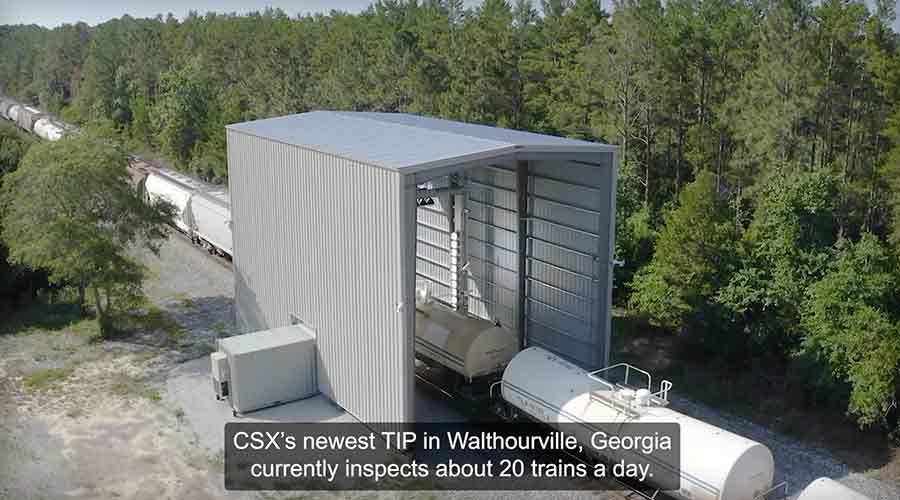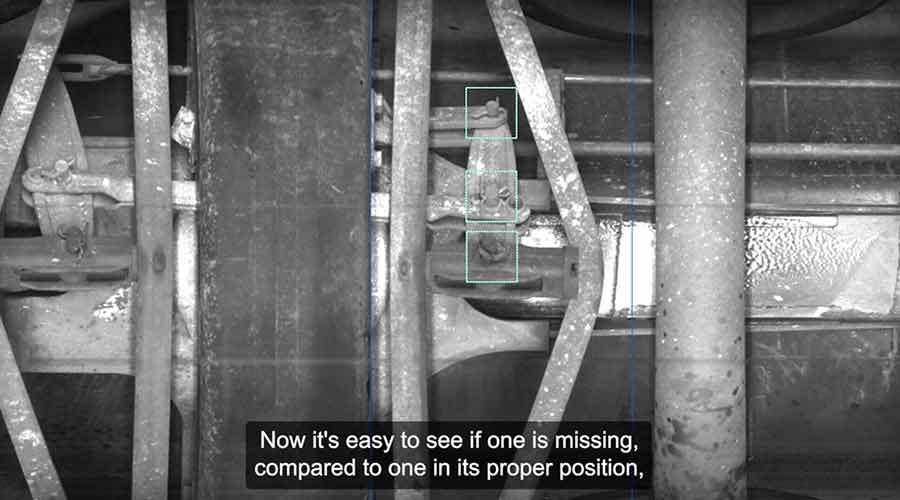CSX opens third train inspection portal near busy Georgia yard
3/21/2023
By Jeff Stagl, Managing Editor
CSX’s mainline that runs through Waycross, Georgia, is a bustling route that’s used by dozens of trains each day. Its yard in Waycross is the railroad’s busiest terminal based on annual volume.
Those primarily are the reasons why the Class I needed a third train inspection portal (TIP) in the area to help keep trains moving fluidly. In February, a new TIP began operating in Walthourville, Georgia, northeast of the Waycross terminal.
The third portal joins one that opened just outside of Waycross in 2019 and another that opened later northwest of the yard.
The TIPs feature 20 or more high-speed cameras and other devices designed to capture images of various components in real time as a train passes through the portal at normal operating speed. The detailed inspections can detect missing or problematic items on rail cars or locomotives to help prevent line-of-road failures and identify components that might be failing.
 The newest portal features 20 high-speed cameras that capture images of various components in real time as a train passes through at normal operating speed. CSX
The newest portal features 20 high-speed cameras that capture images of various components in real time as a train passes through at normal operating speed. CSX The Walthourville site was selected for the third TIP so most of the remaining train traffic going in and out of Waycross on the Nahunta Subdivision could be monitored, CSX officials said in an email. The three TIPs now enable the Class I to use machine vision logic to monitor 95% of all traffic around Waycross, they added.
In combination with artificial intelligence (AI)-powered processing, machine vision cameras are designed to provide high-performance defect detection at production speeds.
CSX uses a number of algorithms to review TIP images and identify potential component defects, such as missing bolts, open box-car doors or misshapen air hoses. The process also helps identify cotter pins or keys — which are critical to a train’s braking system — that are missing or in the wrong position.
Prior to employing TIPs, carmen conducted car inspections by walking around trains that reached the Waycross yard. If any defects were spotted, a car was sent to the shop for repairs.
 Images generated by a TIP show if cotter pins or keys — which are critical to a train’s braking system — are missing or in the wrong position. CSX
Images generated by a TIP show if cotter pins or keys — which are critical to a train’s braking system — are missing or in the wrong position. CSX “We are concentrating on the cameras that provide visibility where it is the hardest for our team members to see, like the undercarriage and roof of the rail cars,” CSX officials said. “We are training the machine vision logic to find the presence and condition of components in the brake system, for brake beams, brake levers and slack adjusters.”
The collected images and data provide advanced notifications of issues that might cause a blockage or affect track integrity, they said.
Operating the first two TIPs helped CSX broaden efforts to detect component problems while trains are in transit and prevent service failures.
“We have identified situations that were not in our preliminary list of use cases that we now can find through an AI algorithm. Over 200 exceptions have been found so far,” CSX officials said.
For the railroad’s leaders, the “industry pioneering software” associated with TIPs — as they characterize it — poses many possibilities for further exploiting machine vision systems.
“The dynamic method of inspection provides insight to solve future line-of-road issues, which improves our safety and customer service,” CSX officials said.

